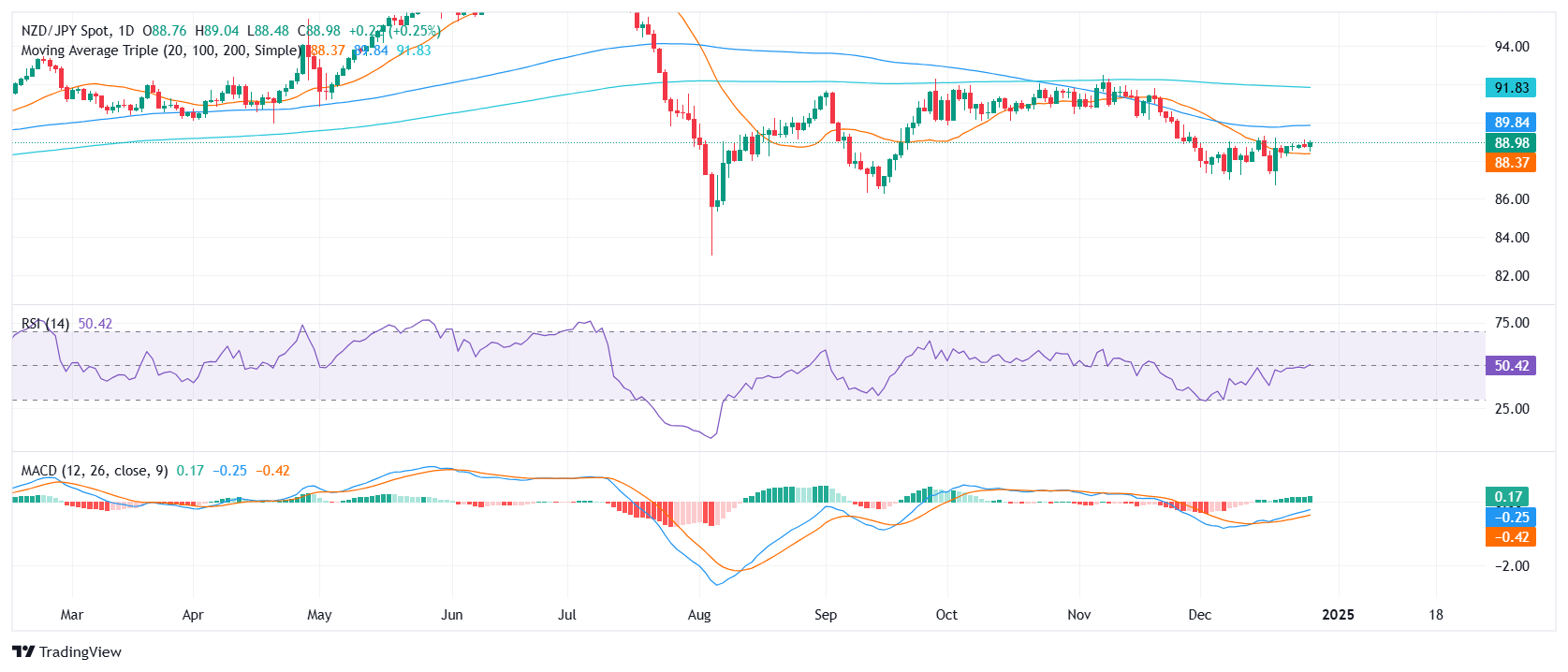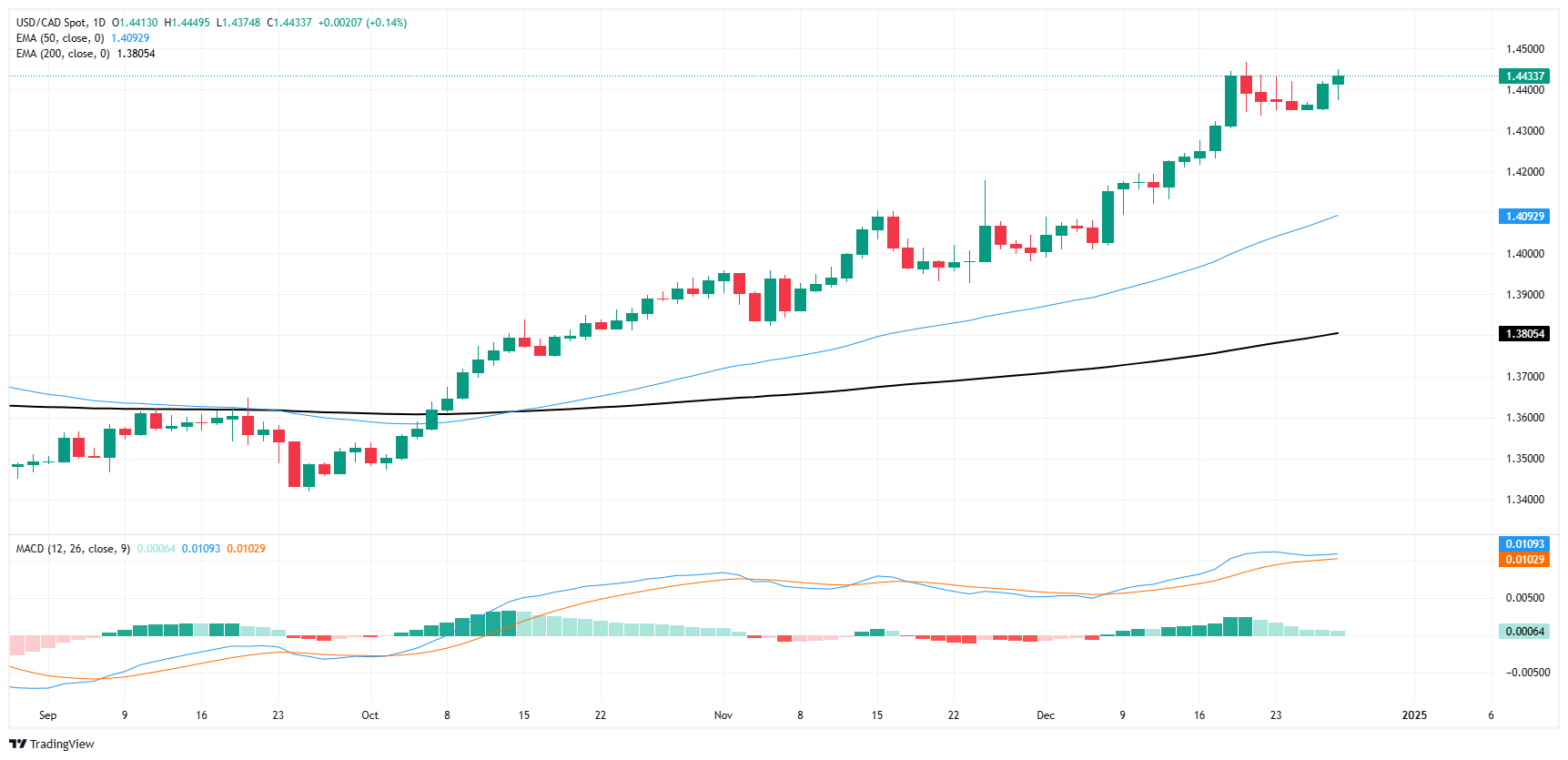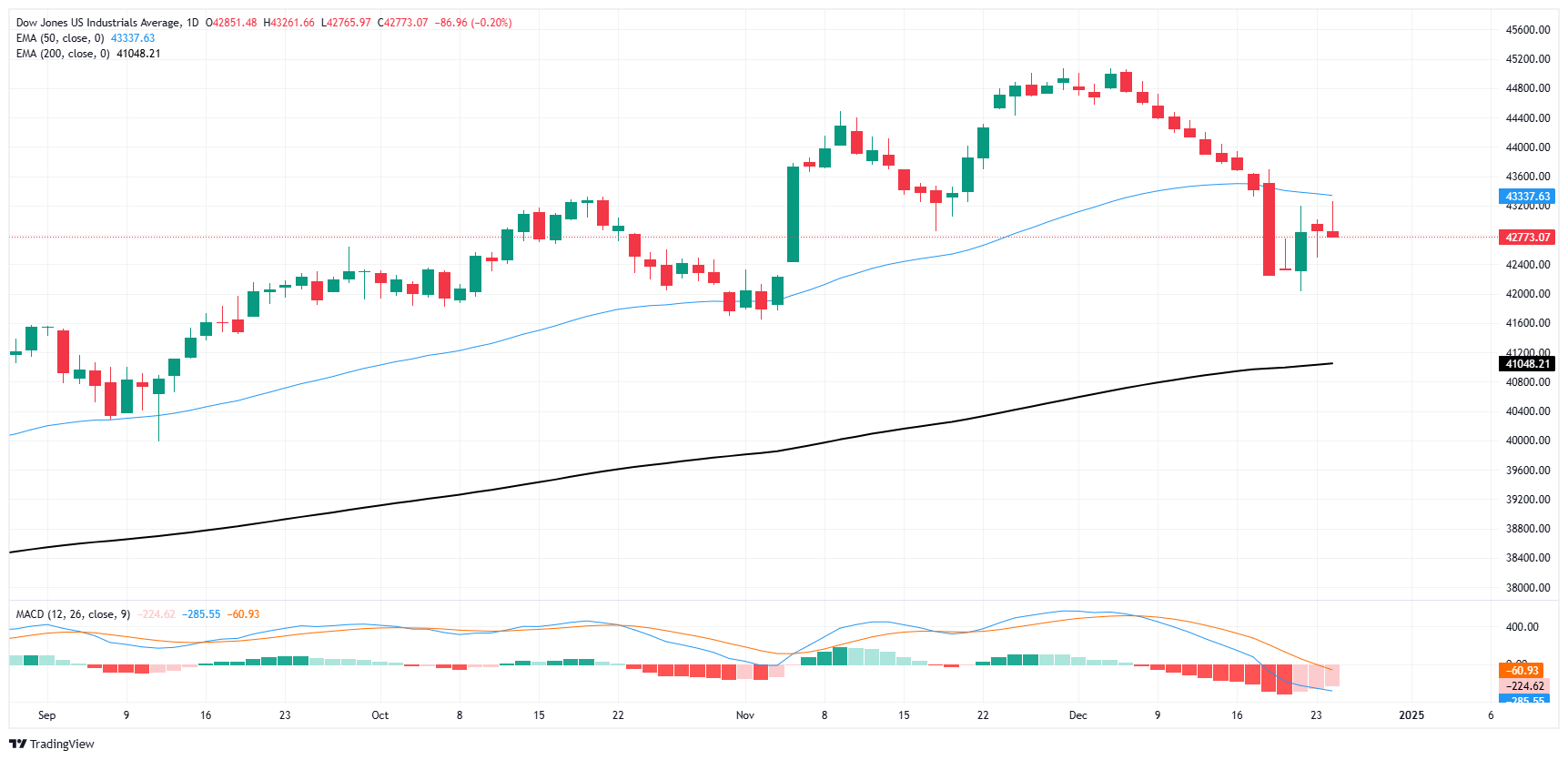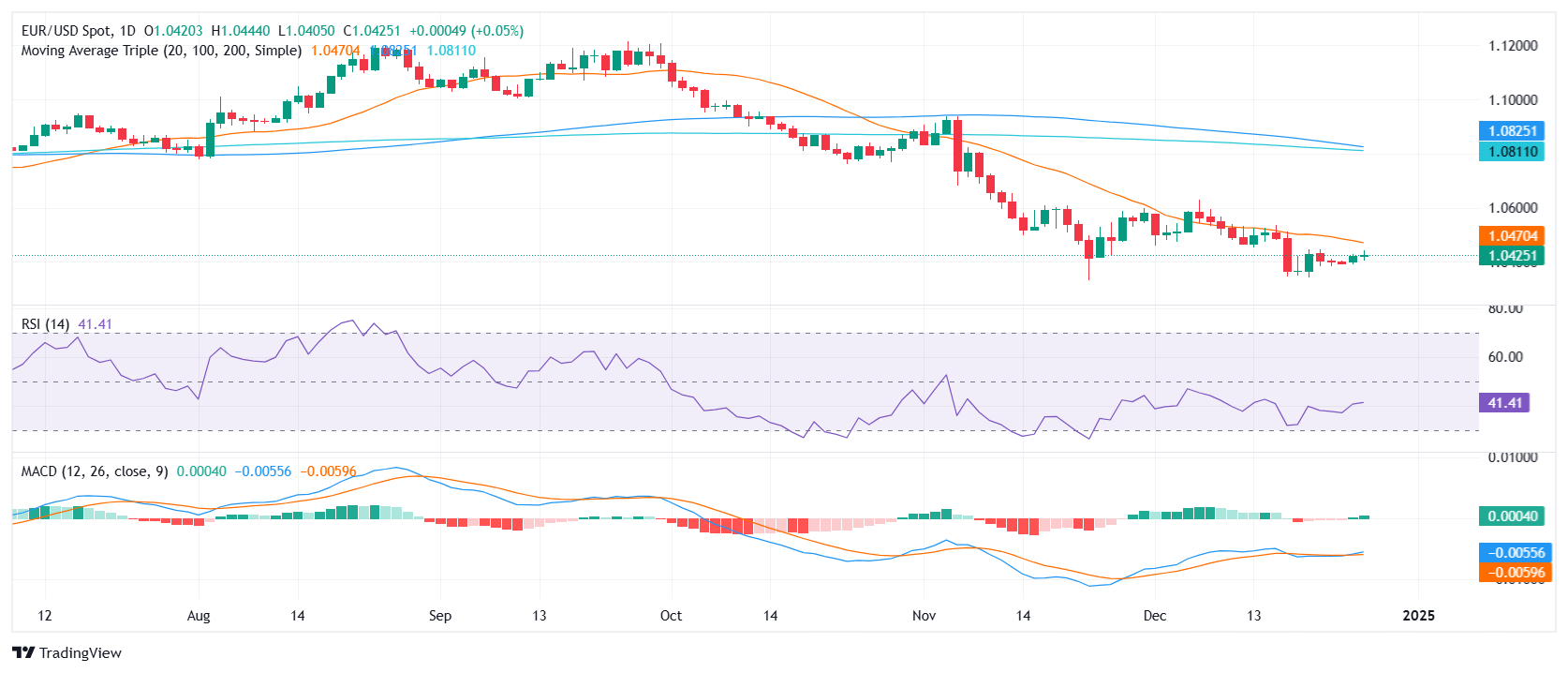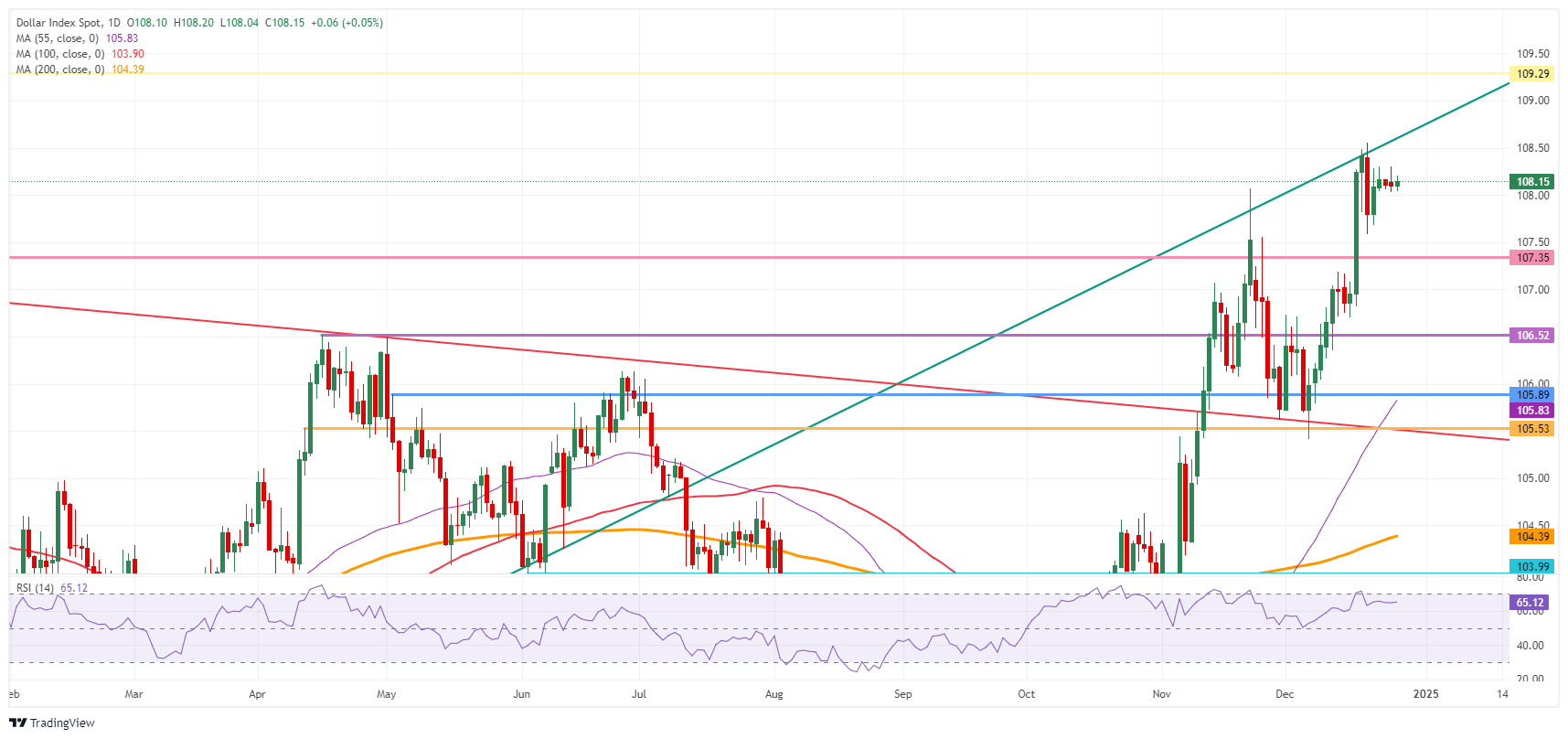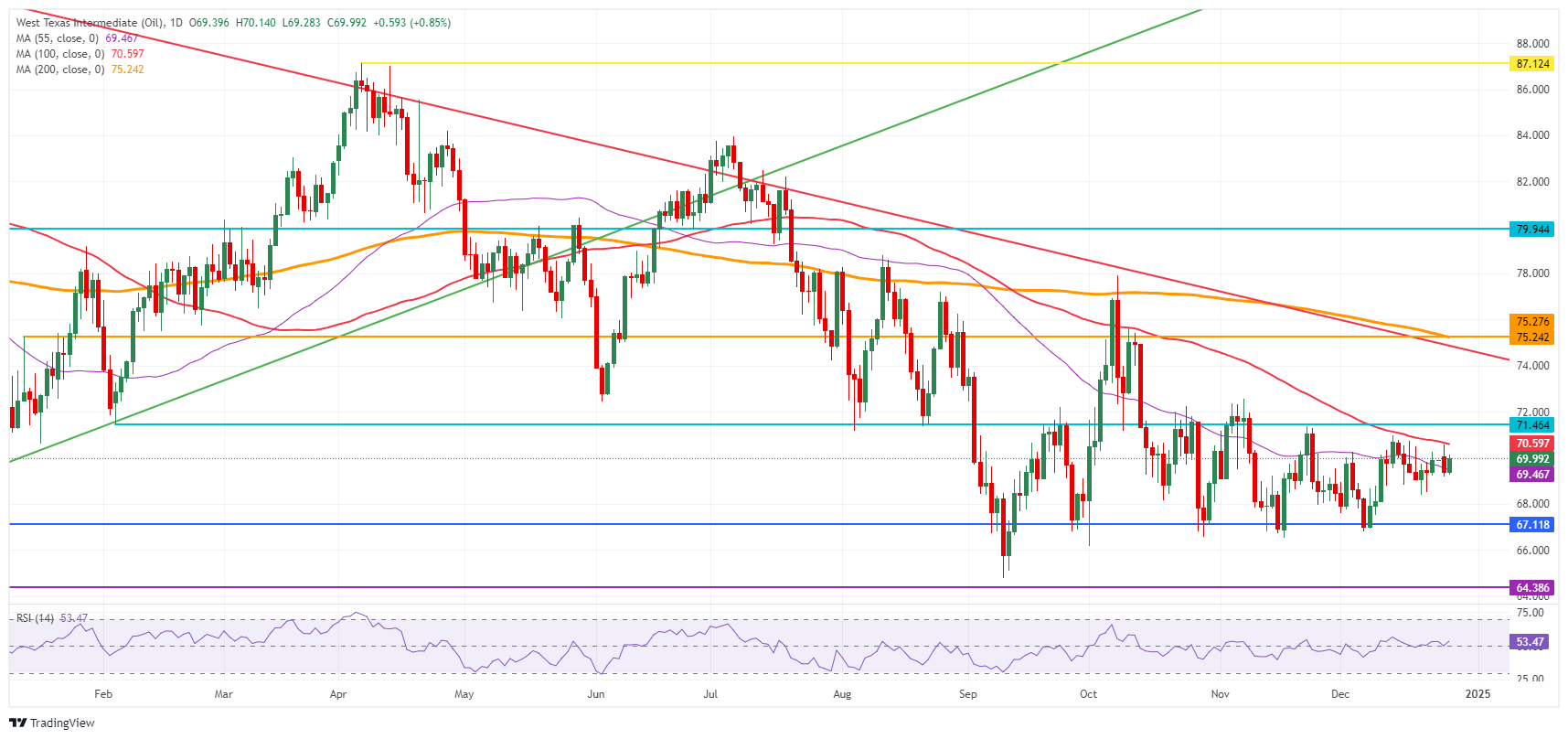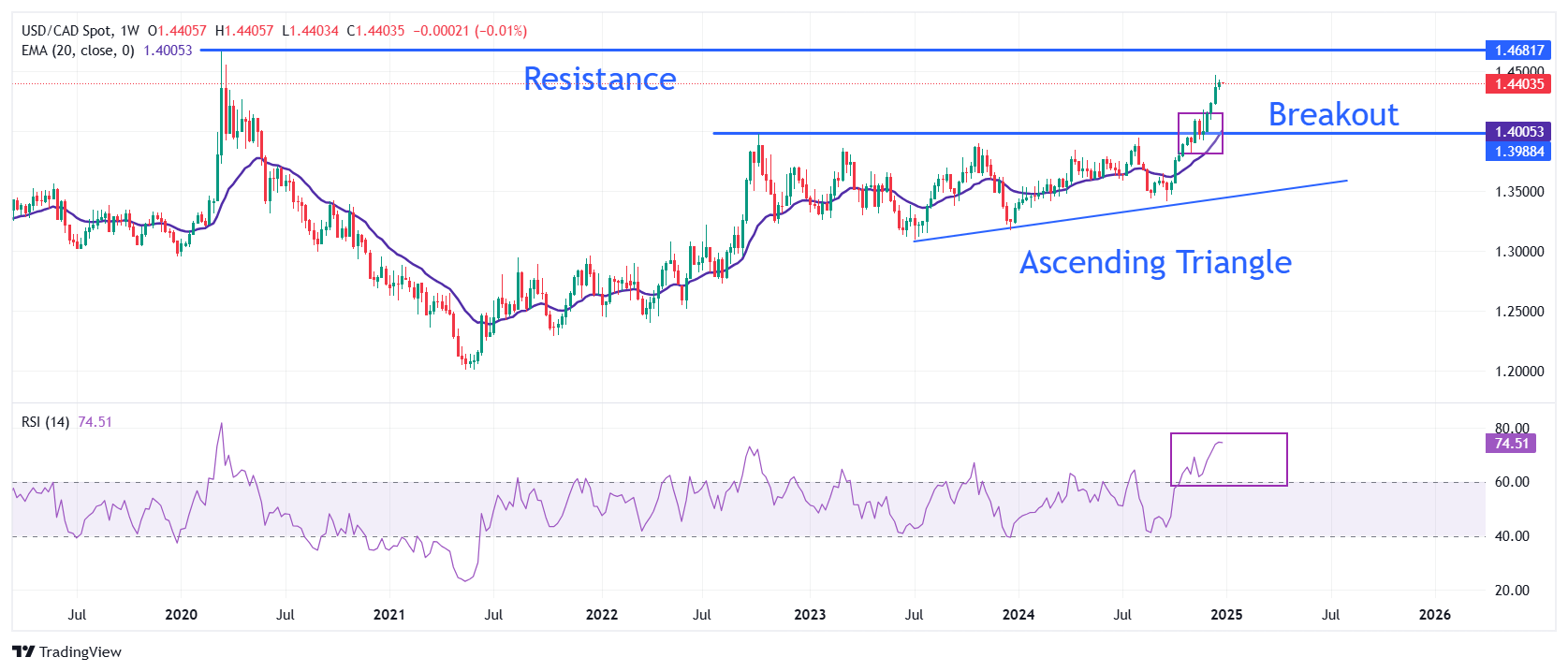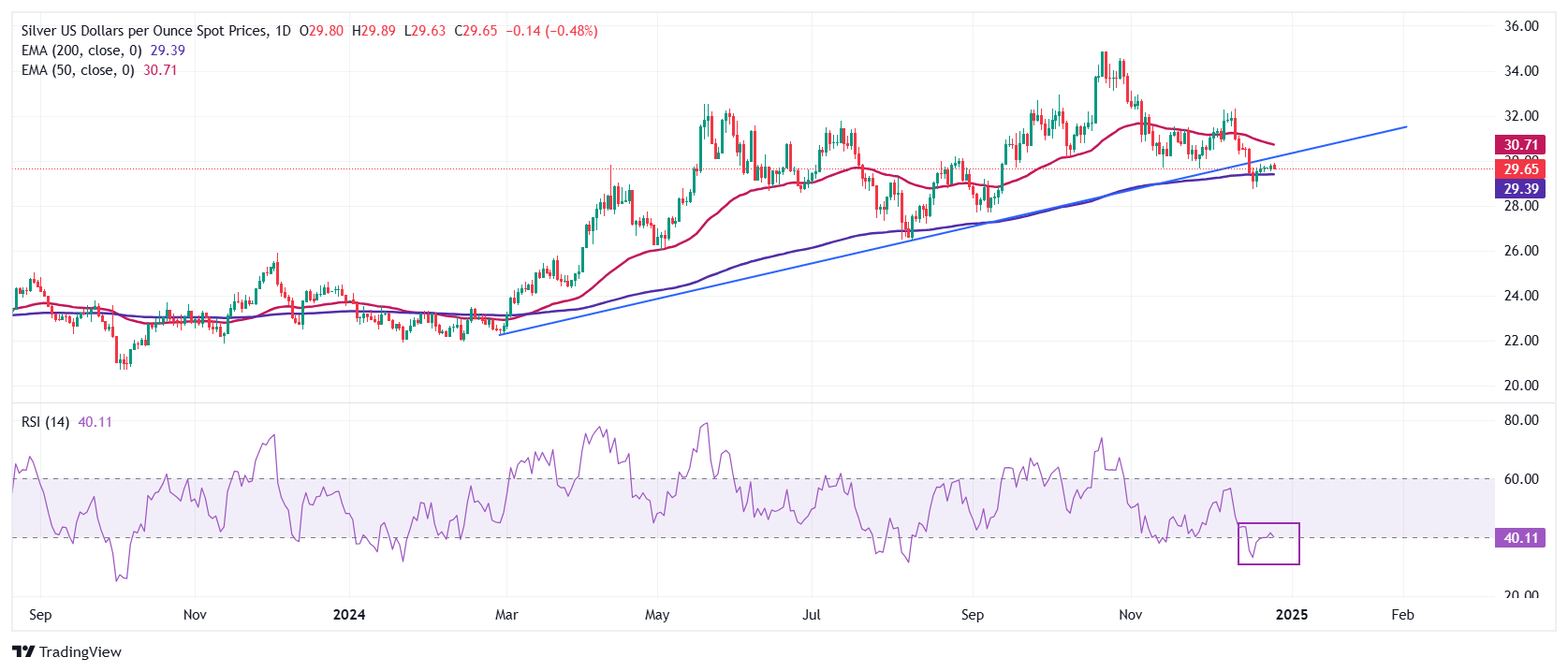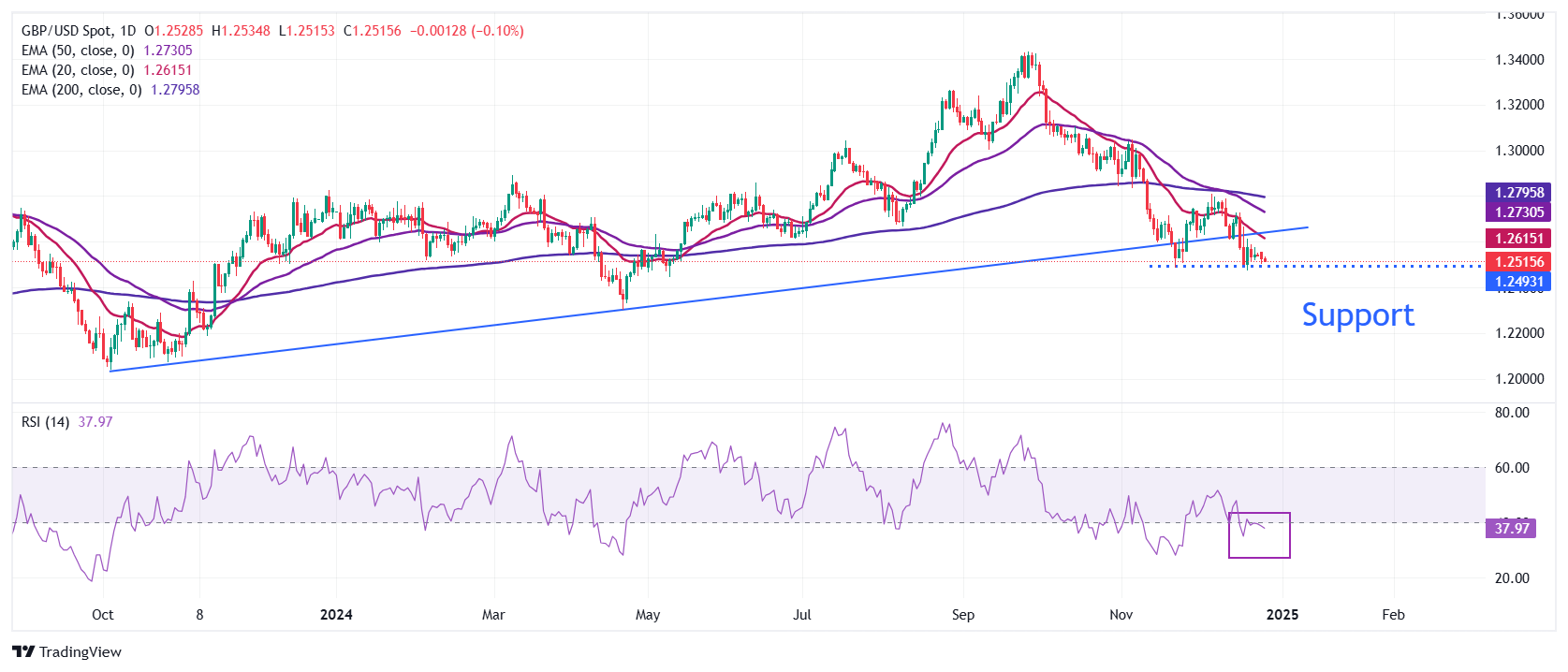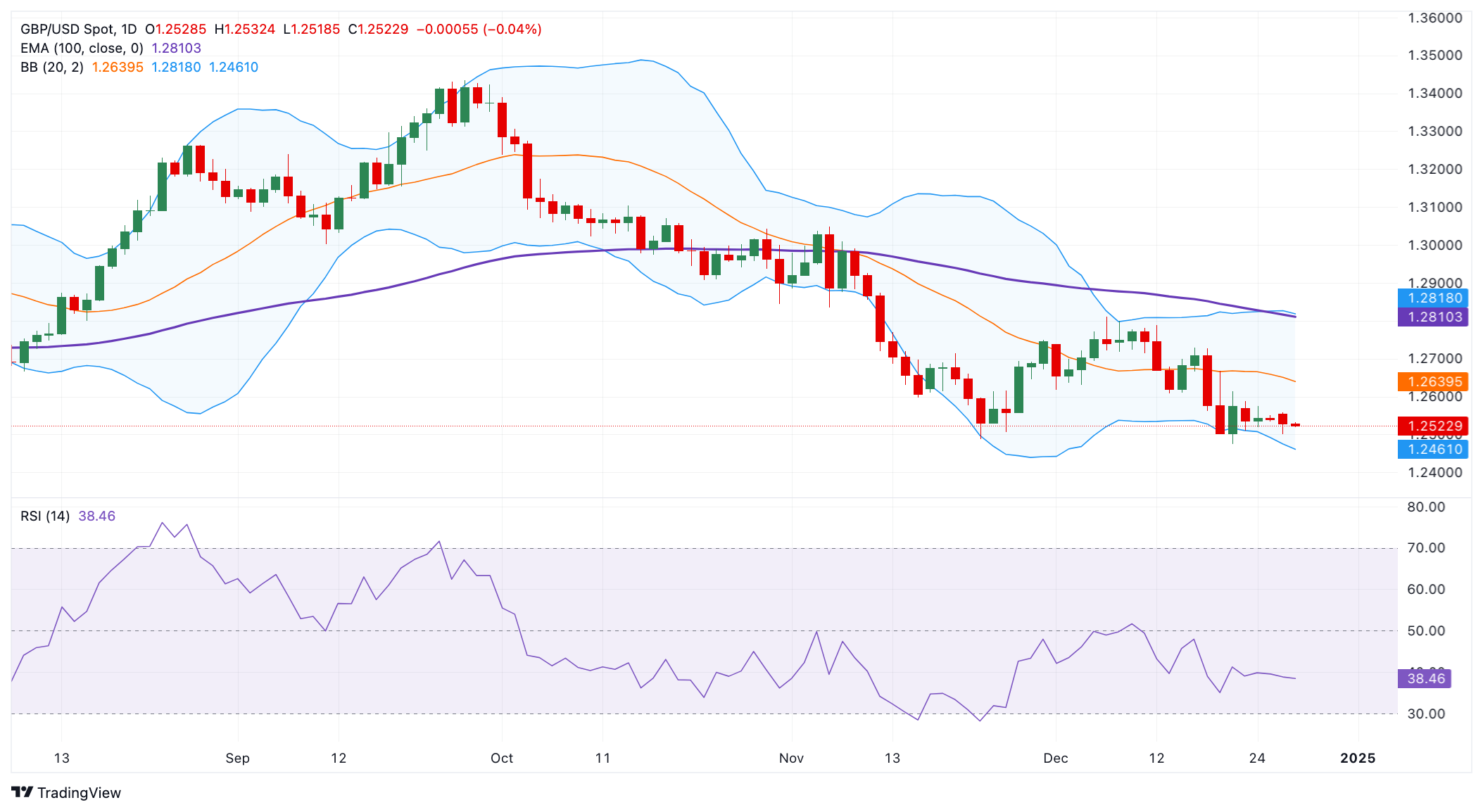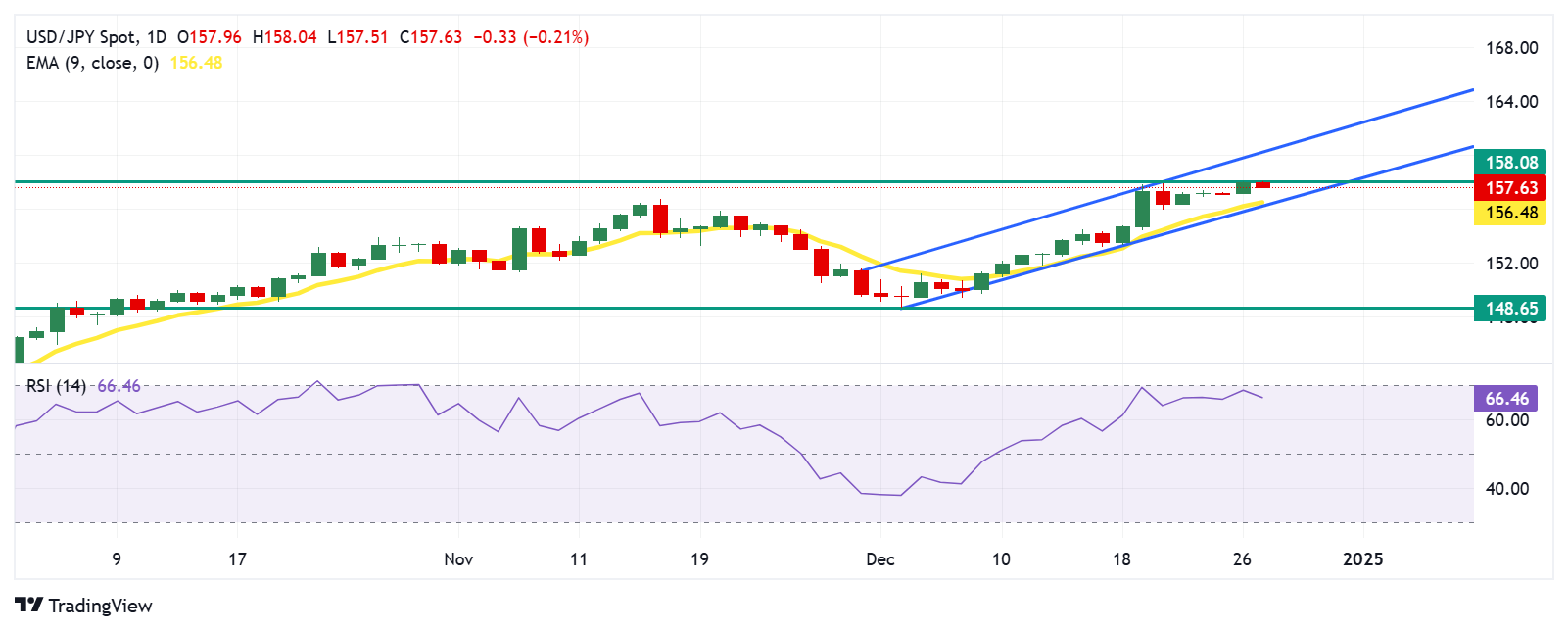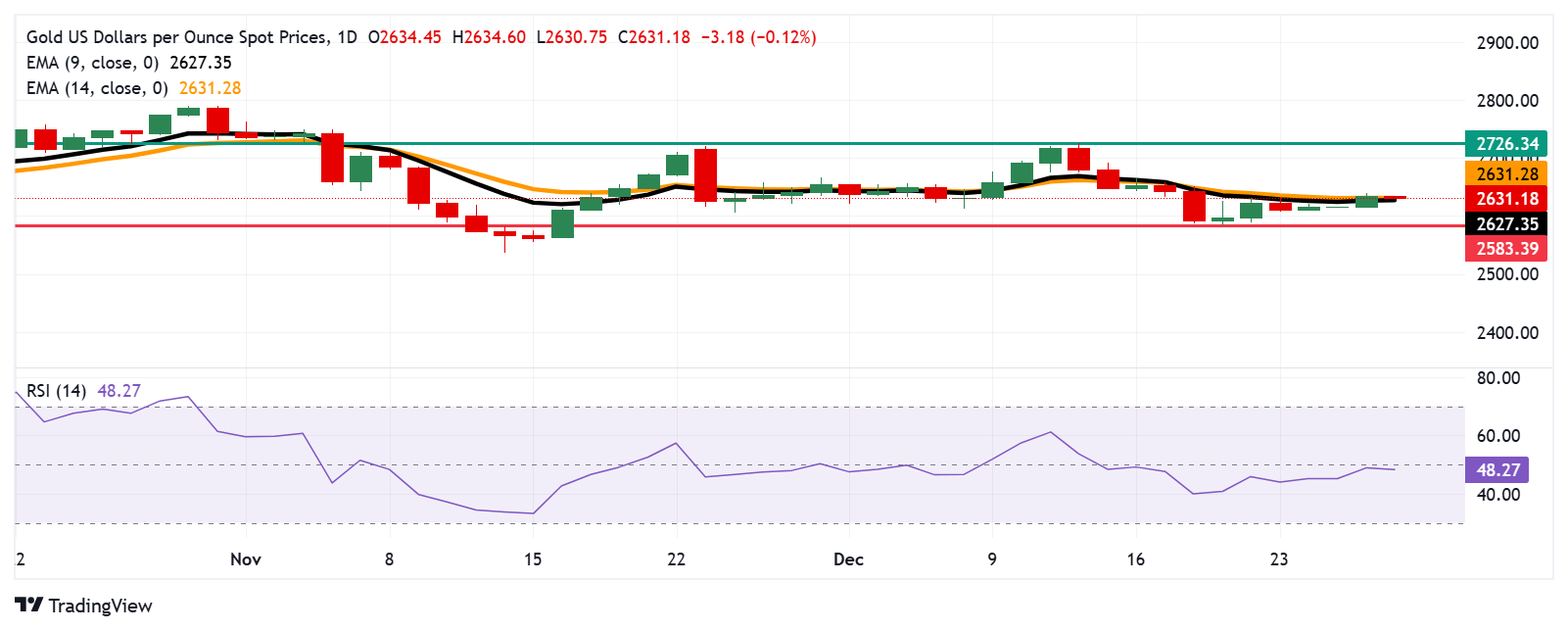- Analytics
- News and Tools
- Market News
CFD Markets News and Forecasts — 27-12-2024
- NZD/JPY inches higher on Friday, touching 88.90 and holding recent upside momentum.
- MACD bars remain green but have flattened, signaling cautious optimism amid lingering downside risks.
- RSI moves up to 51, entering positive territory as buyers tentatively return.
NZD/JPY added a modest 0.20% on Friday, climbing to 88.90 and building on the gains seen since the pair broke above its 20-day Simple Moving Average (SMA). This move comes after a notable loss of ground prompted by a breakout from a sideways trading range between 90.00 and 92.00, underscoring the pair’s ongoing effort to regain its footing.
Under the hood, the Relative Strength Index (RSI) has shifted to 51, sitting just inside the positive zone and hinting at a mild uptick in buying interest. Meanwhile, the Moving Average Convergence Divergence (MACD) histogram remains above zero but has flattened out, suggesting that bullish momentum may need a further push to gain traction.
Looking ahead, a firm close above the 20-day SMA could help solidify the recovery, potentially targeting resistance points closer to 90.00. Should the pair slip back below this moving average, however, NZD/JPY could once again be vulnerable to renewed selling pressure.
NZD/JPY daily chart
© 2000-2025. All rights reserved.
This site is managed by Teletrade D.J. LLC 2351 LLC 2022 (Euro House, Richmond Hill Road, Kingstown, VC0100, St. Vincent and the Grenadines).
The information on this website is for informational purposes only and does not constitute any investment advice.
The company does not serve or provide services to customers who are residents of the US, Canada, Iran, The Democratic People's Republic of Korea, Yemen and FATF blacklisted countries.
Making transactions on financial markets with marginal financial instruments opens up wide possibilities and allows investors who are willing to take risks to earn high profits, carrying a potentially high risk of losses at the same time. Therefore you should responsibly approach the issue of choosing the appropriate investment strategy, taking the available resources into account, before starting trading.
Use of the information: full or partial use of materials from this website must always be referenced to TeleTrade as the source of information. Use of the materials on the Internet must be accompanied by a hyperlink to teletrade.org. Automatic import of materials and information from this website is prohibited.
Please contact our PR department if you have any questions or need assistance at pr@teletrade.global.
